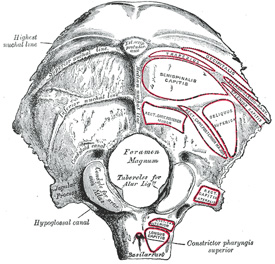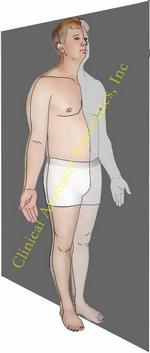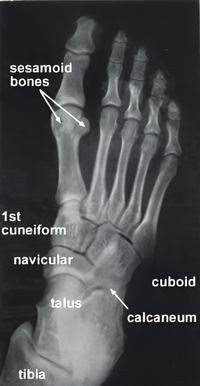
Medical Terminology Daily (MTD) is a blog sponsored by Clinical Anatomy Associates, Inc. as a service to the medical community. We post anatomical, medical or surgical terms, their meaning and usage, as well as biographical notes on anatomists, surgeons, and researchers through the ages. Be warned that some of the images used depict human anatomical specimens.
You are welcome to submit questions and suggestions using our "Contact Us" form. The information on this blog follows the terms on our "Privacy and Security Statement" and cannot be construed as medical guidance or instructions for treatment.
We have 848 guests online

Georg Eduard Von Rindfleisch
(1836 – 1908)
German pathologist and histologist of Bavarian nobility ancestry. Rindfleisch studied medicine in Würzburg, Berlin, and Heidelberg, earning his MD in 1859 with the thesis “De Vasorum Genesi” (on the generation of vessels) under the tutelage of Rudolf Virchow (1821 - 1902). He then continued as a assistant to Virchow in a newly founded institute in Berlin. He then moved to Breslau in 1861 as an assistant to Rudolf Heidenhain (1834–1897), becoming a professor of pathological anatomy. In 1865 he became full professor in Bonn and in 1874 in Würzburg, where a new pathological institute was built according to his design (completed in 1878), where he worked until his retirement in 1906.
He was the first to describe the inflammatory background of multiple sclerosis in 1863, when he noted that demyelinated lesions have in their center small vessels that are surrounded by a leukocyte inflammatory infiltrate.
After extensive investigations, he suspected an infectious origin of tuberculosis - even before Robert Koch's detection of the tuberculosis bacillus in 1892. Rindfleisch 's special achievement is the description of the morphologically conspicuous macrophages in typhoid inflammation. His distinction between myocardial infarction and myocarditis in 1890 is also of lasting importance.
Associated eponyms
"Rindfleisch's folds": Usually a single semilunar fold of the serous surface of the pericardium around the origin of the aorta. Also known as the plica semilunaris aortæ.
"Rindfleisch's cells": Historical (and obsolete) name for eosinophilic leukocytes.
Personal note: G. Rindfleisch’s book “Traité D' Histologie Pathologique” 2nd edition (1873) is now part of my library. This book was translated from German to French by Dr. Frédéric Gross (1844-1927) , Associate Professor of the Medicine Faculty in Nancy, France. The book is dedicated to Dr. Theodore Billroth (1829-1894), an important surgeon whose pioneering work on subtotal gastrectomies paved the way for today’s robotic bariatric surgery. Dr. Miranda.
Sources:
1. "Stedmans Medical Eponyms" Forbis, P.; Bartolucci, SL; 1998 Williams and Wilkins
2. "Rindfleisch, Georg Eduard von (bayerischer Adel?)" Deutsche Biographie
3. "The pathology of multiple sclerosis and its evolution" Lassmann H. (1999) Philos Trans R Soc Lond B Biol Sci. 354 (1390): 1635–40.
4. “Traité D' Histologie Pathologique” G.E.
Rindfleisch 2nd Ed (1873) Ballieres et Fils. Paris, Translated by F Gross
"Clinical Anatomy Associates, Inc., and the contributors of "Medical Terminology Daily" wish to thank all individuals who donate their bodies and tissues for the advancement of education and research”.
Click here for more information
- Details
This article is part of the series "A Moment in History" where we honor those who have contributed to the growth of medical knowledge in the areas of anatomy, medicine, surgery, and medical research.
Peter Paul Broca (1824- 1880). Surgeon and anthropologist, Peter Paul Broca was born in Sainte-Foy-la-Grande in France. His earlier studies were in mathematics, but graduated in medicine, becoming a professor of clinical surgery. He became interested in anthropology and applied his mathematical expertise to the measurement and interpretation of his findings in comparative anatomy.
Broca was the founder of the first Anthropological Society of Paris, and used this venue to deliver most of his work. A prolific writer, Broca published over 500 scientific papers and several books. At one of the meetings of the society the discussion was directed to brain areas and speech. Broca had a patient with a condition that he referred to as aphemia (later known as aphasia); this patient died a few days later and upon autopsy, Broca was able to see a distinct cavity in the left lateral frontal lobe. Upon finding the same situation in another patient, he was able to describe the area of the brain responsible for speech, known today as "Broca's area" in the third left frontal brain convolution. Broca is responsible for naming many of the craniometric points in the human skull such as bregma, dacryon, inion, lambda, metopion, etc.
Broca was part of the discovery and study of the Neanderthal man. He remained the secretary of the Anthropological Society of Paris until his death in 1880.
Original image in the public domain, courtesy of National Institutes of Health.
- Details
The term [aphasia] has Greek origins and means "without speech". This pathology was first described by Paul Broca who called it "aphemia".
Aphasia is a total and complete loss of speech. Lesser presentations of this condition should be called [dysphasias) from the prefix [dys-] meaning "abnormal", and [phasia], meaning "speech".
Aphasia is the lack of spoken speech due to cerebral cortex damage in the dominant brain hemisphere, usually the left side in right-handed individuals. There are two main areas of the brain involved in speech: Broca's and Wernicke's. Broca's area is responsible for speech expression (the spoken and written word). Damage to this area causes expressive or motor aphasia (or dysphasia).
Wernicke's area is responsible for the comprehension of speech, the understanding of language. Damage to this area causes receptive or sensory aphasia (or dysphasia). Broca's and Wernicke's areas are connected by an intrahemispheric tract known as the arcuate fasciculus (see image).
pathologies are:
- Agraphia / dysgraphia: Incapacity / difficulty in writing
- Anomia / dysnomia: Incapacity / difficulty in naming objects
- Aphrasia / dysphrasia: Incapacity / difficulty forming phrases or sentences. The patient can communicate with single words, but cannot form sentences.
Image under copyleft agreement courtesy of The Brain from Top to Bottom
- Details
The scaphoid is one of the proximal carpal bones that form the wrist. The name arises from the Greek [scaphe], meaning "boat"; and [-oid], meaning "similar to". The scaphoid bone roughly resembles a rowboat. It is also known as the navicular bone (from the Latin [navis] meaning "boat"), and os naviculare manus.
Proximally, the scaphoid bone articulates with the radius. Distally, the scaphoid articulates with the trapezium and trapezoid bones. On its medial aspect, the scaphoid bone has two articular surfaces for the lunate and the hamate bones. The scaphoid bone also has very strong ligamentous connections with the lunate bone by way of the scapholunate interosseous ligament
The accompanying image shows the anterior (volar) surface of the wrist.
Image modified from the original: "3D Human Anatomy: Regional Edition DVD-ROM." Courtesy of Primal Pictures
- Details
The terms [medial] and [lateral] are opposing anatomical relationship terms that indicate the location of a structure or structures in relation to the midline or median plane. The accompanying image depicts the median plane.
The term "midline" is a bit of a misnomer, as this is a plane and not a line, although if you look at the median plane from the anterior or posterior aspect of an individual in the anatomical position, you would have a line, ergo, midline! Look at this article on the anatomical position to see an explanation and image of this concept.
The term [medial] means "closer to the midline". An example of the use of this term is: "the head of the clavicle is medial to the shoulder joint", that is, the head of the clavicle is closer to the midline than the shoulder joint.
The term [lateral] means "further from the midline". An example of the use of this term is: "the wrist joint is lateral to the elbow joint", that is, the wrist joint is further away from the midline than the elbow joint.
Click on the image for a visual explanation of the concepts of "medial" and "lateral".
Images property of: CAA.Inc. Artist: Victoria G. Ratcliffe
- Details

External view of the occipital bone
The term [inion] is Greek [ινιον] and originally referred to the posterior aspect of the neck or occiput and its musculature and strength, as mentioned in the Iliad.
The term fell in disuse for hundreds of years, until it was resurrected by Peter Paul Broca (1824-1880) as a craniometric point. The inion is the midline protuberance in the posteroinferior aspect of the external surface of the occipital bone. Today, in most anatomy texts the inion is referred to as the "external occipital protuberance"
The inion is found at the intersection of three bony lines that are easily palpable, the bilaterally situated superior nuchal line, and the median nuchal line. It is labeled "Ext. occip. protuberance" (see accompanying image). There is a corresponding internal occipital protuberance in the internal aspect of the occipital bone.
Sources:
1. "The Origin of Medical Terms" Skinner, HA 1970 Hafner Publishing Co.
2. "Medical Meanings - A Glossary of Word Origins" Haubrich, WD. ACP Philadelphia
3 "Tratado de Anatomia Humana" Testut et Latarjet 8 Ed. 1931 Salvat Editores, Spain
4. "Anatomy of the Human Body" Henry Gray 1918. Philadelphia: Lea & Febiger
Image modified by CAA, Inc. Original image by Henry Vandyke Carter, MD., courtesy of bartleby.com
- Details
The word [sesamoid] means "similar to a sesame". First used by Galen c.180AD, he describes small ovoid bones that are "similar to a sesame seed", referencing the seed of the plant sesamum indicum, the oil of which was used as a laxative at that time.
Sesamoid bones are found in the tendons of some muscles and are mostly inconstant. Largey and Bonnet proposed a classification for these bones as: accessory, capsuloligamentous, intratendineous, and mixed.
Of special interest to this article are the sesamoid bones found within the two tendons of the flexor hallucis brevis muscle in the base of the foot (see accompanying X-ray image). These bones, especially the medial sesamoid bone, was attributed religious, mystical, and magical powers since ancient times. This is due to the fact that this small bone is highly resistant to natural decomposition. A Hebrew medical text dated 210 BC, attributed to Ushaia presented a small bone he called "luz" as the "depository of the soul". Many other authors, including Vesalius (who called it Albadaran), believed that upon resurrection, the whole body could reform from this "seed" bone.
This belief was later reinforced by religious texts into the early Renaissance which stated that this bone was indestructible and its presence was enough to guarantee resurrection for believers.
Note: The original X-ray was published here courtesy of Wesley Norman, PhD in his website. The website is no longer available, so the image is now in the public domain via www.archive.org.
Sources:
1. "Les os sesamoides de l’hallux : du mythe a`la fonction" Largely,A; Bonnel, BE Med Chir Pied 2008 24: 28–38
2. "Tratado de Anatomia Humana" Testut et Latarjet 8 Ed. 1931 Salvat Editores, Spain
3. "De Humani Corporis Fabrica" Vesalius, Andrea. 1543 Oporinus
Thanks to the first year medical students at the University of Cincinnati who inspired this article. Dr. Miranda






